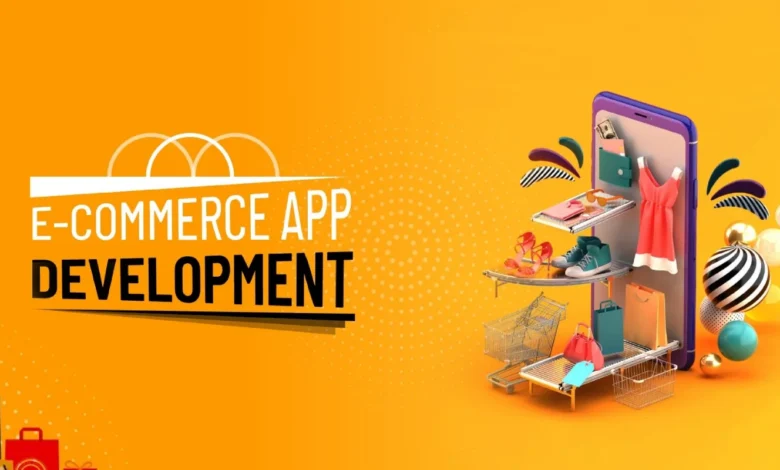
To be competitive in the ever-changing world of e-commerce, firms need to keep one step ahead of trends. E-commerce apps need to change as consumer behaviors and technology progress to match the demands of the modern market. We’ll look at current and upcoming trends in e-commerce app development in this blog. Online shopping is expected to change as a result of these trends, which include AI-driven personalization and sustainable business methods. For businesses looking to build ecommerce app, staying informed about these trends is crucial to maintaining a competitive edge.
AI and Machine Learning for Personalization
Through the provision of highly tailored purchasing experiences, Artificial Intelligence (AI) and Machine Learning (ML) are revolutionizing the e-commerce experience. Massive volumes of data, such as social media activity, purchase trends, and browser history, are analyzed by AI algorithms to provide targeted marketing and tailored recommendations.
- Personalized Product Recommendations: AI is being used more and more by e-commerce apps to provide customized product recommendations. AI can forecast what products a customer is likely to be interested in by evaluating customer data, which improves the shopping experience and boosts conversion rates. One of the best examples of this tendency is Amazon’s recommendation engine, which contributes significantly to the company’s revenue.
- Virtual assistants and chatbots: Chatbots and virtual assistants driven by AI are increasingly prevalent in e-commerce applications. These tools help with the purchasing process, respond to questions, and offer 24/7 customer assistance. They make the shopping experience more efficient and smooth by using natural language processing to comprehend and reply to consumer requests.
Augmented Reality (AR) and Virtual Reality (VR)
By bridging the gap between physical and digital shopping experiences, AR and VR technologies are completely changing the way consumers purchase online.
- Virtual Try-Ons: Using augmented reality technology, consumers may virtually try on apparel, accessories, and cosmetics. Customers can see how things will look on them before making a purchase, which helps them make more educated judgments. Apps from companies like IKEA and Warby Parker have effectively included augmented reality try-on capabilities.
- Immersive Shopping Experiences: Virtual reality (VR) offers shoppers engaging shopping experiences by emulating real-world stores in which they may peruse merchandise and make purchases just like they would in person. High-end stores and those selling complicated products stand to gain the most from this technology since it enables customers to thoroughly examine products.
Voice Commerce
Voice commerce is a rising trend in e-commerce, propelled by the widespread use of smart speakers and voice assistants such as Apple’s Siri, Google Assistant, and Amazon’s Alexa.
- Voice Search Optimization: To meet the needs of the increasing number of customers who use voice commands to search for products, e-commerce apps are optimizing for voice search. To provide precise search results, this calls for the application of natural language processing and a comprehension of the subtleties of spoken language.
- Voice-Activated Shopping: Customers can use voice commands to make purchases via voice-activated shopping. This trend is becoming more and more popular because it makes shopping convenient and hands-free. Voice commerce features are being added by retailers to their apps in an effort to expedite the checkout process.
Social Commerce
E-commerce combined with social media platforms is becoming more and more popular, or social commerce. Instagram, Facebook, TikTok, and other social media sites are turning into popular shopping locations.
- Shoppable Posts and Stories: Businesses can now publish shoppable posts and stories on social media networks, letting customers buy things straight from their feeds. Social networking and e-commerce are seamlessly integrated, which improves customer satisfaction and increases revenue.
- Influencer Marketing: Social commerce is still heavily reliant on influencer marketing. Influencers and brands work together to promote items, with brands utilizing the influencer’s credibility and reach to increase sales. E-commerce applications are incorporating functionalities to enable influencer partnerships and monitor their effect on revenue.
Sustainability and Ethical Shopping
The ethical and environmental implications of consumer purchases are gaining ground on consumers. E-commerce applications are encouraging ethical and environmentally friendly purchasing methods in response to this need.
- Eco-Friendly Products and Practices: E-commerce applications emphasize environmentally friendly goods and use sustainable business methods. This entails utilizing packaging that is recyclable, cutting carbon emissions, and encouraging moral sourcing and production.
- Transparency and Traceability: Customers are interested in learning about the origins and production methods of the goods they buy. With the help of traceability and transparency features offered by e-commerce apps, consumers can follow the path of their goods from manufacturing to delivery.
Mobile Commerce (M-commerce)
Mobile commerce is taking over as the most popular way to shop online as smartphones become more and more commonplace. Mobile optimization is being done by e-commerce apps to offer a smooth buying experience on smaller screens.
- Mobile-First Design: To guarantee a seamless and simple user experience on mobile devices, e-commerce apps are implementing mobile-first design principles. This includes quick loading times, simple navigation, and responsive design.
- Mobile Payment Solutions: Digital wallets and contactless payments are two examples of mobile payment systems that are growing in popularity. These payment methods are being integrated into e-commerce apps to offer a simple and safe checkout procedure.
Subscription-Based Models
In e-commerce, subscription-based models are becoming more and more common since they give clients convenience and a reliable source of income for firms.
- Subscription Boxes: E-commerce apps are starting to include subscription boxes, where users can receive things that are carefully chosen on a regular basis. This model is very well-liked in the culinary, fashion, and cosmetics industries.
- Membership Plans: Members receive special offers from membership plans, like free shipping, early access to new products, and discounts. Membership programs are being integrated into e-commerce apps in order to foster client loyalty and improve retention.
Blockchain and Cryptocurrency
Blockchain technology and cryptocurrencies are entering the e-commerce space, bringing with them new payment choices, increased security, and transparency.
- Secure Transactions: Blockchain offers a transparent and safe method of conducting business, lowering the possibility of fraud and boosting buyer-seller confidence. Blockchain integration for supply chain management and safe payment processing is being investigated by e-commerce apps.
- Cryptocurrency Payments: The acceptance of cryptocurrency payments in e-commerce is growing. A growing demographic of tech-savvy customers can be served by e-commerce apps by incorporating bitcoin payment alternatives.
Enhanced Delivery and Fulfillment Options
Deliveries that are dependable and timely are essential to client pleasure. In order to satisfy user expectations, e-commerce apps are looking into cutting edge fulfillment and delivery solutions.
- Same-Day and Next-Day Delivery: Particularly in cities, same-day and next-day delivery services are becoming more widespread. Logistics companies are collaborating with e-commerce apps to provide these options for faster delivery.
- Click and Collect: Click and collect—an online ordering method where clients pick up their items at a physical location—is becoming more and more common. Customers can enjoy ease and save money on shipping when they choose this option.
Data Privacy and Security
As e-commerce apps gather more information to customize the buying experience, it is critical to guarantee data security and privacy.
- Compliance with Data Protection Regulations: Data protection laws including the California Consumer Privacy Act (CCPA) and the General Data Protection Regulation (GDPR) must be complied with by e-commerce apps. This entails putting strong data security measures in place and being open about how data is collected and used.
- Enhanced Security Features: E-commerce apps are using advanced security features like encryption, two-factor authentication, and biometric authentication to safeguard user data. These steps contribute to preventing data breaches and fostering client confidence.
Conclusion
Consumer behavior shifts and technical improvements will continue to determine the future of e-commerce apps. Personalization is being driven by AI and ML, shopping is being improved by AR and VR, and hands-free ease is being provided by voice commerce. E-commerce tactics are increasingly requiring social commerce, sustainability, and mobile-first design. The landscape is being further transformed by increased delivery alternatives, blockchain, and subscription models. Data security and privacy are still essential to e-commerce app’s ability to retain user’s trust as they navigate these developments. E-commerce companies can stay ahead of the curve and offer remarkable shopping experiences in the digital era by adopting these new trends.



